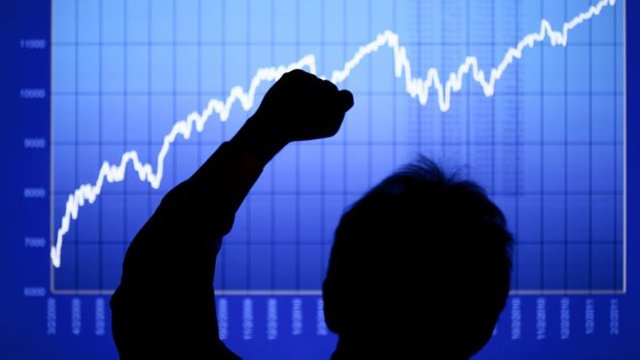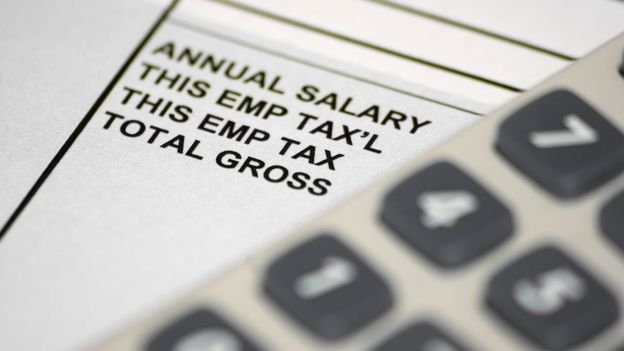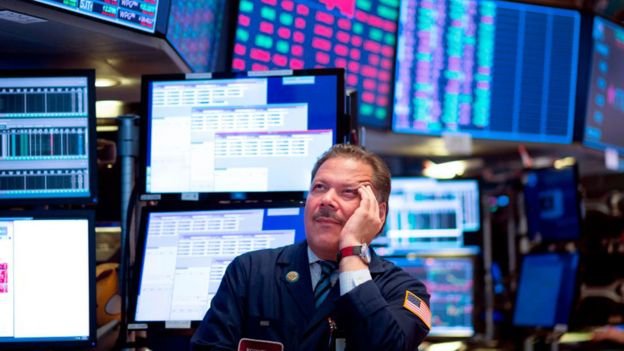Three ways Trump wants to juice US economy

Fears of a possible recession on the horizon has led the White House to begin considering several emergency measures to kickstart the US economy.Donald Trump likes to claim credit for "the greatest" economy ever. He's banking on it to help him win re-election in 2020.So growing concerns about a possible slowdown - or even a recession - do not sit well with the "great" salesman who over the last few days has offered glowing reviews of the American economy along with his advisers.By most measures they're not wrong.America's current economic expansion is the longest in US history. More Americans are in work. They're being paid more. And they're spending more.But behind closed doors, the administration's top economic aides have been rattled by the flashing red signals from the financial markets and weakness overseas. They are looking for options to stimulate the economy. Among the measures they're considering - more tax cuts.
What tax cut is Trump mulling?
Speaking to reporters at the White House on Tuesday, President Trump said his administration is looking at a temporary payroll tax cut to help the economy. But he said nothing was imminent.The appeal is simple - if you're worried about a recession, a payroll tax cut can boost consumer spending, which accounts for about two-thirds of the US economy.Most American employees pay a "payroll tax", which is separate from their federal income tax and is used to fund healthcare and benefit programmes for the elderly - such as Medicare and the Social Security Administration.But not everyone is convinced that is the right medicine for the patient given that American consumers are still spending happily."Right now, investment is lagging, not consumer spending," says Kyle Pomerleau, Chief Economist at the Tax Foundation."As such, a payroll tax doesn't seem well timed

He suggests that it was Trump's escalating trade dispute between China and the United States that was holding up businesses' decision making."He might have better luck if he were to rescind some of his tariffs, which are probably causing some uncertainty for businesses and impacting investment."
Has this been done before?
The policy was last used during the Obama administration in the wake of the 2008 financial crisis when it faced huge pushback from Congressional Republicans.In 2011 and 2012, the former president lowered the payroll tax from 6.2% to 4.2%, immediately giving American workers more disposable income.Today the White House is nervous that something bad may happen to the economy. As an insurance policy, it now finds itself considering the same manoeuver Republicans once opposed."If the mere suggestion that a recession might threaten their own election prospects is enough to send Republicans rushing to embrace an economic stimulus tool they opposed during the Obama years, that would be blatantly hypocritical and nakedly political," Steve Wamhoff at the Institute on Taxation and Economic Policy wrote in a recent blog post.Most tax experts agree that cutting the payroll tax can help in a downturn. But if it becomes routine, it could raise longer term questions about the funding for programmes like Social Security - a key component of the US social safety net.
And like all tax cuts, a payroll tax cut would also be costly. It would add to the deficit, but just how much? The Committee for a Responsible Federal Budget, an independent public policy think tank, has done the maths.They estimate that cutting the employee-side Social Security payroll tax by two percentage points for two years would cost nearly $300bn, before interest.All that red ink could make the government less effective at responding to a recession."There are cheaper and more progressive ways to stimulate consumption," according to Eugene Steuerle, an Institute fellow and the Richard B Fischer chair at the Urban Institute.
What other tax is Trump looking at?
While the payroll tax cut is getting a lot of attention, it certainly isn't the only tax proposal on the table.The White House is also considering an executive order to require the US Treasury to index capital-gains taxes to inflation. A move that would cost about $100bn over 10 years."We've been talking about indexing for a very long time", the president told reporters.

The move is controversial because it would bypass Congress and is seen as disproportionately benefitting the rich who tend to own more assets and therefore would get more out of this type of tax cut."Indexing of capital gains is a permanent change, not a temporary countercyclical or anti-recession policy", said Eugene Steuerle who served as deputy assistant secretary of the US Department of the Treasury for Tax Analysis."It mainly benefits higher-income households, it stimulates consumption much less than other anti-recession policies."
What do Republicans think?
The idea still has plenty of supporters among Republicans.Texas Senator Ted Cruz and a group of Republican senators sent a letter in late July to Treasury Secretary Steve Mnuchin urging him to take this action.Doing so, they argued, would benefit "Americans across all income levels" because of trickle down economics.But there are plenty of reasons to be sceptical.Trump promised his major tax cut in 2017 would usher in an investment boom. This would allow the US to grow 3% a year (much faster than it did during the Obama years) and make up for the lost government revenue.The reality, however, has not lived up to the hype.The US budget deficit has already surpassed last year's total figure and recently jumped by 27% according to government figures released on Monday. The Treasury Department forecasts a deficit of more than $1tr by the end of the fiscal year, two months from now.Add to this that business spending, one of the indicators the Trump administration likes to look at, is constrained.
What about interest rates?
And if fiscal stimulus won't guarantee prosperity, the president can return to his favourite economic boogie man - America's central bank, the Federal Reserve.Donald Trump renewed his attacks against Fed chair Jerome Powell, comparing his handling of the economy in a tweet to a "golfer who can't putt".Mr Trump has persistently called for the Fed to cut interest rates to spur growth and calm financial markets.
The stock market is one of the barometers the President watches but recently the Dow Jones Industrial Average suffered its biggest single day loss of the year. This may explain his latest push for a 100 basis point rate cut - the biggest since the 2008 crisis.While he blames the Fed for not moving aggressively enough, many economists say it is Mr Trump's trade policies that are weakening the global economy. There is also concern that he is undermining the Federal Reserve just when he may need it most.
Is this all about recession fears?
Trump continues to say he is not worried about a recession and that the various tax reductions being considered have been in the works for a long time. But his fear that a downturn might turf him out of office has made him and his advisers very nervous.It is not clear when a downturn may occur or how it would affect Mr Trump's re-election prospects. But the White House isn't taking any chances.Just last Monday, Vice-President Mike Pence accused the press and Democrats of rooting for a recession when he spoke at the Detroit Economic Club."Despite the wishful thinking of some naysayers in the media and in the Democratic Party, the American economy is strong."He adds this warning, should his boss not win a second term: "For all of the progress we've made, all of it could be lost